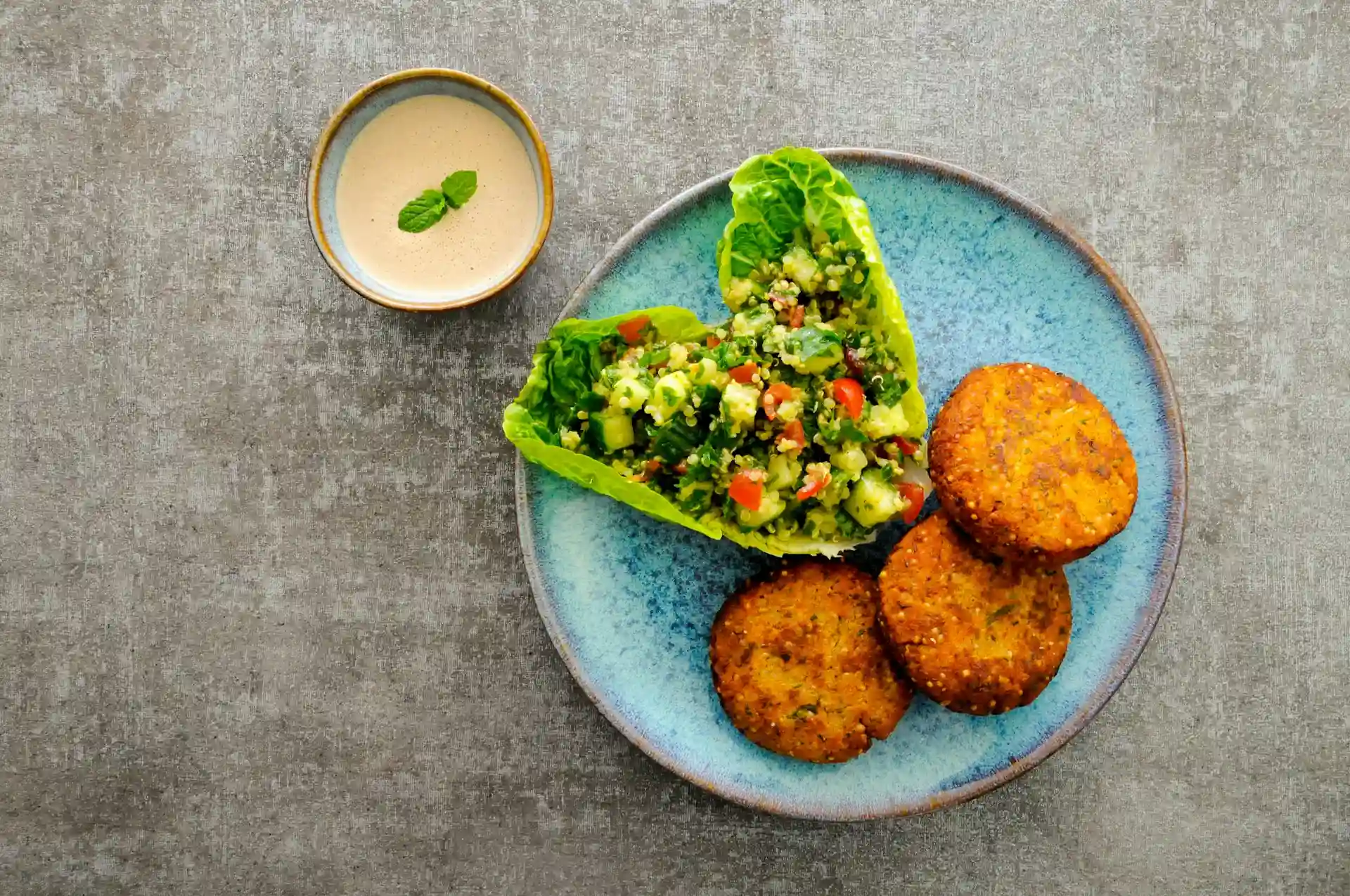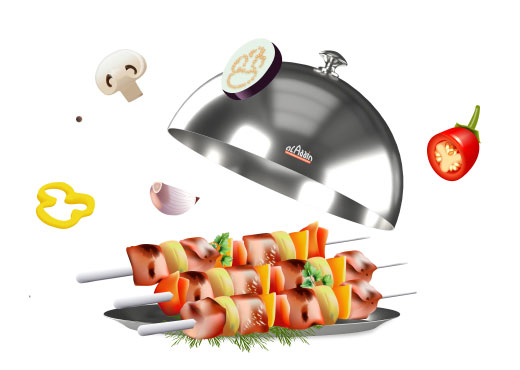Welcome to our deep dive into the delightful world of Fattoush, a staple salad in Middle Eastern cuisine known for its fresh ingredients, crunchy textures, and zesty dressing. This comprehensive guide will explore what Fattoush is, its origins, a step-by-step recipe, and much more. Let’s embark on a culinary journey that promises no fluff, just the essential flavors and facts.
What is Fattoush?
Fattoush is a Levantine salad that beautifully combines various fresh vegetables, herbs, and crispy pieces of toasted or fried bread known as ‘pita’. It’s dressed in a tangy mixture of olive oil, lemon juice, and sumac, giving it a distinctive taste that’s both refreshing and satisfying.
The Origins of Fattoush
The history of Fattoush is as rich and varied as its ingredients. Originating from the Levant area, which includes countries like Lebanon, Syria, Jordan, and Palestine, Fattoush was traditionally a way to use up stale bread and seasonal vegetables.
Its name derives from the Arabic word ‘fatteh’, meaning ‘crumbs’, referring to the leftover pita bread pieces mixed into the salad. Over time, Fattoush has evolved into a beloved dish enjoyed in homes and restaurants alike.
Fattoush Recipe
Ingredients
- 2 large pitas, preferably slightly stale
- 3 tablespoons olive oil
- 1 large cucumber, diced
- 2 medium tomatoes, diced
- 1 red onion, thinly sliced
- 2 radishes, thinly sliced
- 1 bell pepper, diced
- 2 handfuls of fresh parsley, roughly chopped
- 1 handful of fresh mint, roughly chopped
- Juice of 2 lemons
- 2 tablespoons extra virgin olive oil
- 1 teaspoon sumac
- Salt and pepper to taste
Equipment
- Baking sheet
- Large mixing bowl
- Small bowl for dressing
- Knife and chopping board
Instructions
Preparing the Pita
- Preheat the Oven: Set your oven to 375°F (190°C). This will be used to crisp up the pita bread.
- Prepare the Pita: Tear the pitas into bite-sized pieces, toss them with 3 tablespoons of olive oil, and spread them out on a baking sheet.
- Bake: Toast the pita pieces in the oven for 10-15 minutes or until they are golden and crispy. Once done, set aside to cool.
Making the Salad
- Chop the Vegetables: While the pita bakes, dice the cucumber, tomatoes, and bell pepper. Thinly slice the red onion and radishes.
- Herbs: Roughly chop the parsley and mint.
- Combine: In a large mixing bowl, combine the chopped vegetables and herbs.
Dressing
- Whisk Together: In a small bowl, whisk together the lemon juice, extra virgin olive oil, sumac, salt, and pepper.
- Dress the Salad: Pour the dressing over the vegetables and herbs, tossing well to ensure everything is evenly coated.
Final Touches
- Add the Pita: Just before serving, add the crispy pita pieces to the salad and toss lightly. This keeps the pita crisp and adds texture to the Fattoush.
Serving Suggestions
Fattoush is best served immediately while the pita is still crispy. It can stand alone as a light meal or accompany grilled meats or fish.
The Cultural Significance of Fattoush
Fattoush is more than just a salad; it’s a testament to the ingenuity of Middle Eastern cuisine, transforming simple, everyday ingredients into a dish with vibrant flavors and textures. It reflects the region’s agricultural bounty and the cultural practice of minimizing waste.
Fattoush vs. Tabouli: A Quick Comparison
While Fattoush and Tabouli are staples in Middle Eastern cuisine, they cater to different tastes and occasions.
Fattoush is a vibrant salad made with mixed greens, a variety of fresh vegetables, and crispy pita bread, dressed in a zesty blend of olive oil, lemon juice, and sumac. It’s known for its diverse textures and robust flavors, often served as a hearty side dish or a light meal.
Tabouli, on the other hand, is a finely chopped parsley-based salad, enhanced with tomatoes, mint, bulgur, and a simple dressing of olive oil and lemon juice. It’s celebrated for its refreshing and herby taste, with a focus on the freshness of the parsley and the tangy dressing. Tabouli serves as a traditional side dish, usually part of a larger mezze platter.
Despite their differences, both salads showcase the beauty of Middle Eastern culinary traditions—utilizing fresh, seasonal ingredients to create dishes that are as nutritious as they are delicious. Whether you prefer the crunchy, varied textures of Fattoush or the finely chopped, lemony freshness of Tabouli, both salads offer a unique taste of the Levant.
FAQs
Can Fattoush be made in advance?
Yes, but for the best texture, keep the dressing and toasted pita separate until just before serving.
What if I can’t find sumac?
While sumac adds a unique tangy flavor, you can substitute it with a little extra lemon juice or zest for a similar zesty profile.
Is Fattoush gluten-free?
Fattoush typically contains pita bread, which is not gluten-free. However, you can use gluten-free pita or omit the bread for a gluten-free version.
How can I add protein to Fattoush?
Grilled chicken, chickpeas, or feta cheese are excellent protein additions to make Fattoush a more filling meal.
Can the vegetables be varied in Fattoush?
Absolutely. Feel free to include or substitute vegetables based on seasonality and personal preference. The essence of Fattoush is its versatility and freshness.
Aladdin Houston: A Culinary Gem for Lebanese-Style Fattoush
Nestled in the heart of Houston, Aladdin Mediterranean Cuisine stands as a beacon for authentic Lebanese culinary experiences, particularly known for its exquisite Fattoush. This restaurant has carved a niche for itself by serving Lebanese-style Fattoush that resonates with the authentic flavors and traditions of the Levant.
At Aladdin Houston, the Fattoush is not just a salad; it’s a culinary masterpiece. Prepared with the freshest local produce and traditional ingredients imported directly from Lebanon, their Fattoush brings a piece of Lebanese culinary heritage to your plate. The crispiness of the freshly baked pita, combined with the tanginess of sumac and the freshness of the vegetables, creates a symphony of flavors that is both delightful and refreshing. What sets Aladdin’s Fattoush apart is the attention to detail and the commitment to authenticity, making it arguably the best Lebanese-style Fattoush in Houston.
Conclusion
Fattoush is more than just a salad; it’s a vibrant expression of Middle Eastern culinary tradition, blending the simplicity of fresh ingredients with the complexity of flavors. Whether you’re making it at home with our detailed guide or enjoying the authentic Lebanese-style Fattoush at Aladdin Houston, this dish is sure to transport your taste buds to the Levant. With its rich history, nutritional benefits, and versatile nature, Fattoush stands as a testament to the timeless appeal of Middle Eastern cuisine. So, the next time you’re looking to add a refreshing touch to your meals, remember that Fattoush is more than up to the task, promising a delightful culinary experience that’s as nourishing as it is flavorful.


